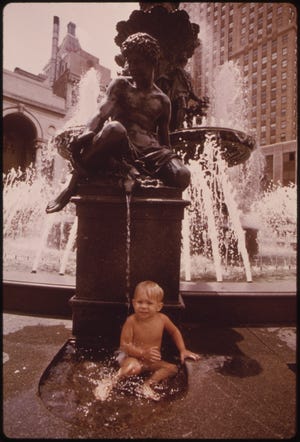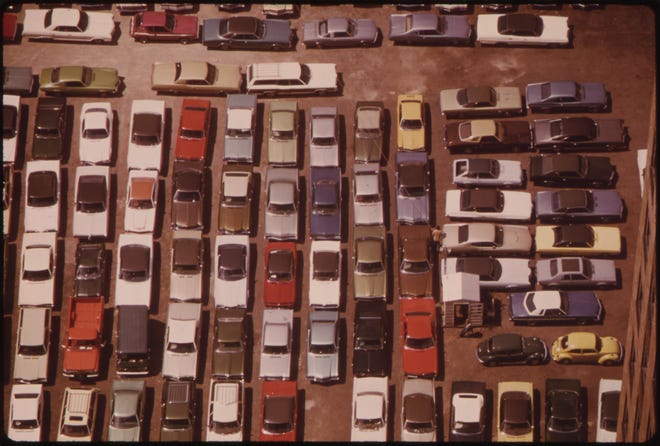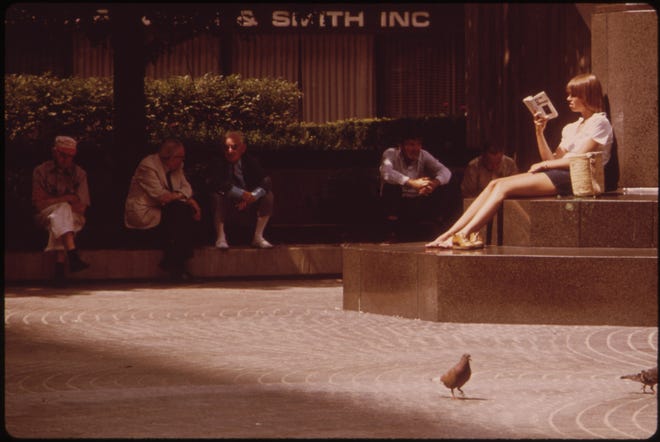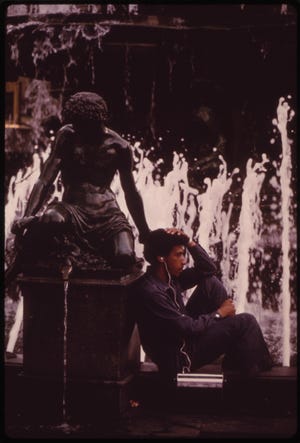

For the Documerica project in the 1970s, the newly-formed Environmental Protection Agency enlisted more than 100 freelance photographers to document the state of America in that decade.
The clear focus was on environmental issues, such as pollution and smog, but also on everyday city and rural life, industries like coal mining and logging, and the racial diversity of America.

Tom Hubbard, who worked as an Enquirer photographer from 1966 to 1978, was assigned to document “a pleasant urban environment,” and chose Cincinnati’s Fountain Square in the spring and summer of 1973, when the Contemporary Arts Center’s D’aug Days festival brought in extra color to the atmosphere.
Hubbard photographed a boy sitting in the fountain. Dancers and sculptures and people’s reactions. Crowds on the square at lunchtime and aerial views of the cityscape. All in warm, earthy, but muted colors. That was an era when news photography was still done in black and white, so color images of Cincinnati at that time are less common.
“It may all look simple, but I am hoping that in 25 years it will be a valuable document of the times,” Hubbard told The Enquirer in 1975.
Documerica ended for a lack of funding in 1977.
The U.S. National Archives has released 15,000 of the Documerica photos online. A Flickr gallery contains 192 of Hubbard’s photos.

“The project takes rightful credit for the United States’ first serious examination of its rapidly decaying natural environment,” C. Jerry Simmons wrote in the 2009 article, “Documerica: Snapshots of Crisis and Cure in the 1970s.”
In 2012, Associated Press photographers revisited many of the locations that had been documented. An illegal landfill in New Jersey had become a field of greenery. The haze of smoke that made industrial smokestacks in Cleveland into silhouettes had been cleared away to reveal an actual city where people lived.
The view of America before the EPA and then 40 years later is striking.






Source link









